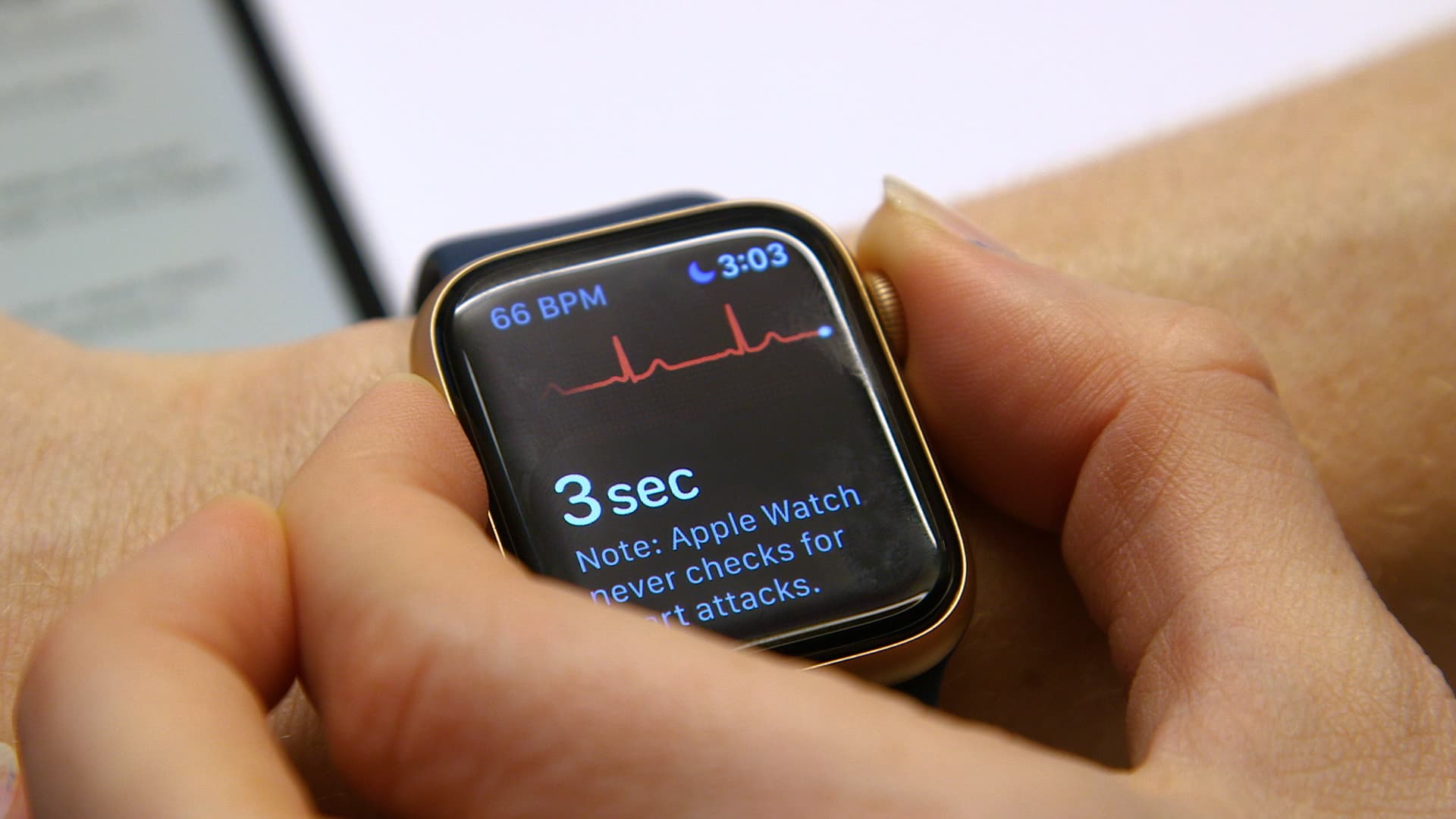In its latest iteration, the Apple Watch comes equipped with a range of useful features, including an FDA-approved heart rate monitoring app that can perform an electrocardiogram (ECG). This app allows users to monitor their heart health and potentially detect irregular heartbeats or rates. In this article, we will guide you through the process of setting up the ECG app on your Apple Watch, measuring your ECG, and interpreting the results.

What is an ECG?
An ECG, or electrocardiogram, is a test that measures the electrical activity of the heartbeat. It provides valuable insights into the rhythm and overall health of the heart. According to the American Heart Association, an ECG can detect whether a person’s heart is beating at a healthy rhythm1. It measures the beats per minute (BPM) of the heart and can identify irregularities that may be early signs of heart conditions.
An ECG test typically looks at 12 areas of the heart to provide a comprehensive picture of its health. However, the ECG app on the Apple Watch focuses on monitoring one specific heart condition: atrial fibrillation (AFib)1. AFib is an irregular heartbeat that, if left untreated, can lead to blood clots, stroke, or heart failure.
Setting Up the ECG App
To use the ECG app on your Apple Watch, you’ll first need to set it up on your iPhone’s Health app. Follow these steps to get started:
- Open the Health app on your iPhone.
- Navigate to the Browse tab.
- Select Heart.
- Choose Electrocardiograms (ECG).
- Tap Set Up ECG App to begin the setup process.
During the setup, you’ll be prompted to enter your birth date, as the app is approved for use by individuals aged 22 and over. Take the time to read through the information about the ECG app, including best practices for taking accurate readings. These tips may include wearing your Apple Watch snugly on your wrist and resting your arm on a table or your leg during the reading1.
After completing the setup process, you’ll have the option to take a test ECG reading immediately or wait until later.
Taking an ECG Measurement
Once the ECG app is set up, you can measure your ECG using your Apple Watch. Follow these steps to take a measurement:
- Open the ECG app on your Apple Watch.
- Ensure that the back of your watch is dry and that it fits snugly on your wrist
- Rest your arm on a surface for stability.
- Press your finger to the watch’s Digital Crown.
The ECG app will start the measurement, which takes approximately 30 seconds. It’simportant to remain still and avoid talking during this time to ensure an accurate reading1.
After the 30-second measurement, you’ll receive one of four possible reading results. It’s important to remember that these results are not a diagnosis but an indication of potential irregularities.
Interpreting ECG Results
Here are the four possible results you may receive after taking an ECG measurement with th
- Sinus Rhythm: This result indicates that your heartbeat has a uniform rhythm between 50 and 100 BPM. While this reading is considered normal, it’s essential to follow up with your doctor if you’re feeling unwell, as the ECG app is not a substitute for professional medical advice1.
- Atrial Fibrillation (AFib): If your ECG reading shows AFib, it means that your henote that the ECG app cannot diagnose AFib. If you receive this result, make sure to schedule a visit with your healthcare provider for further evaluation1.
- Low or High Heart Rate: If your ECG reading indicates a low or high heart rate, it means that your heartbeat is outside the normal range. A low heart rate below 50 BPM or a high heart rate above 120 BPM may not necessarily indicate a problem. Factors such as sleep, physical activity, stress, or underlying health conditions can influence heart rate. If you have concerns, it’s best to consult with your doctor for a comprehensive evaluation1.
- Inconclusive: If your ECG reading is inconclusive, it means that something went wrong during the measurement process. This could be due to user error, such as a sweaty watch back or improper arm positioning. It may also occur if you have a pacemaker or if the electrical signal generated was not sufficient for a reliable reading. If you receive an inconclusive result, try retaking the measurement following the recommended guidelines1.
Additional Tips for ECG Monitoring
While the ECG app on your Apple Watch can provide valuable insights into your heart health, it’s important to remember its limitations and use it in conjunction with professional medical advice. Here are some additional tips for using the ECG app effectively:
- Follow the recommended guidelines for taking accurate readings, including wearing the watch snugly on your wrist and keeping your arm stable during the measurement.
- Regularly update your Apple Watch and iPhone software to ensure you have the latest features and improvements for the ECG app.
- If you experience symptoms such as chest pain, shortness of breath, or dizziness, immediate medical attention instead of relying solely on the ECG app.
- Keep in mind that the ECG app is not designed to detect all heart conditions, and false positives or negatives may occur. Regular check-ups with your healthcareprovider are still essential for a comprehensive evaluation of your heart health.
Conclusion
The ECG app on the Apple Watch provides users with a convenient way to monitor their heart health and potentially detect irregular heartbeats. By following the setup instructions, taking accurate measurements, and interpreting the results correctly, you can use this app as a valuable tool for maintaining your cardiovascular well-being. Remember to consult with your healthcare provider for any concerns or questions regarding your heart health, as they can provide personalized advice based on your specific circumstances.




No comments! Be the first commenter?